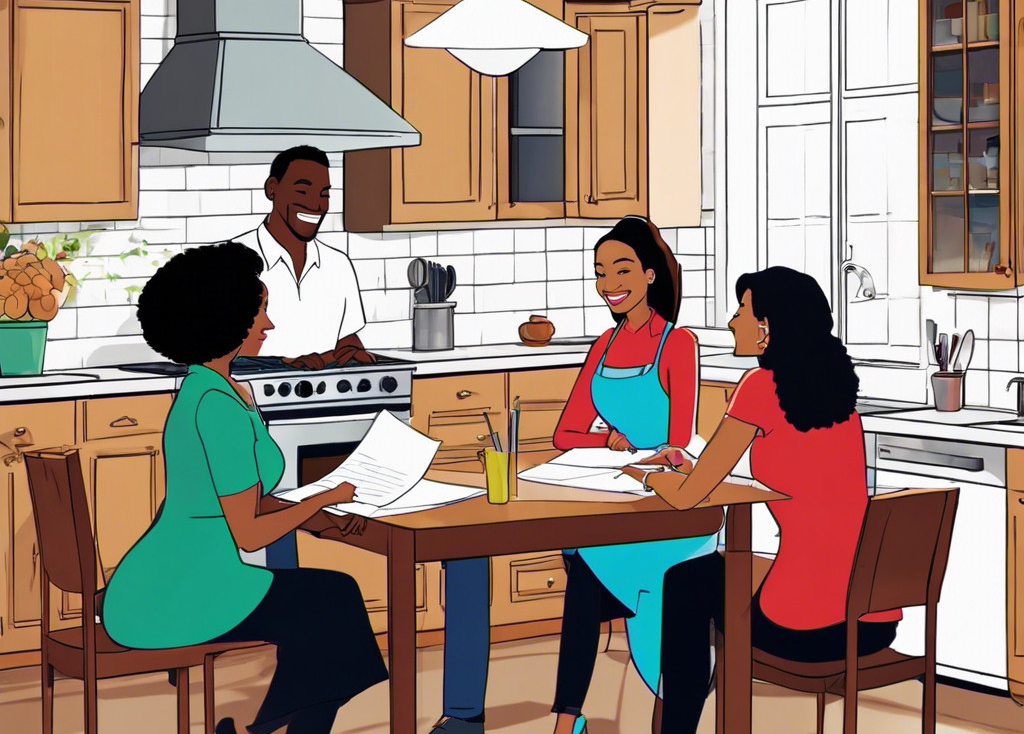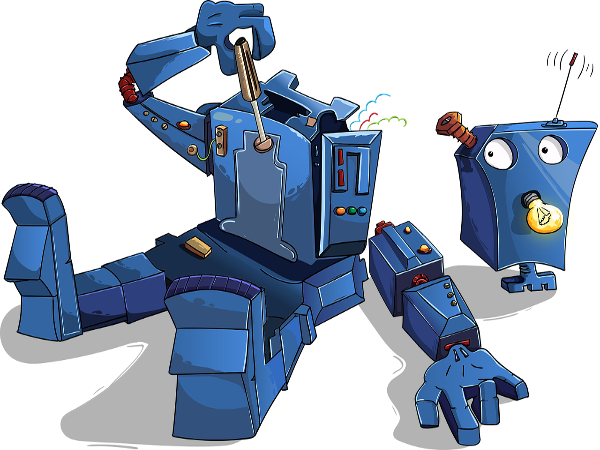
The SA3 System: A Pathway to Self-Discovery and Recovery, by Acknowledging, Identifying & Addressing Your “FAWS”
In the world of personal development and mental health, a groundbreaking self-help approach has emerged. It's all about empowering individuals to take control of their well-being. This revolutionary system is called the SA3 System and was created by The Holistic Press, an organization dedicated to promoting holistic health and well-being.
The SA3 System is built on three essential pillars: Self-Awareness, Self-Analysis, and Self-Action. These pillars are the foundation of the entire system and provide a comprehensive framework for individuals to begin their journey towards self-improvement and recovery. The key is to first acknowledge, then identify, and finally address, your Fears, Anxieties, Weaknesses, and Struggles, which we'll refer to as FAWS.
The Three Pillars of the SA3 System
The SA3 System recognizes that genuine healing and growth originate from within. It encourages individuals to undertake an introspective journey through three critical stages, made considerably easier by The Holistic Press “fill-in-the-blanks” questionnaire and follow-on ICR Method, but the first step starts with you:
Self-Awareness:
The first step toward recovery is admitting that you have a problem. This stage is about understanding your emotions, identifying what sets them off, and being open to the idea that you might need help. It means letting go of denial and facing the truth of your situation, including any underlying challenges or issues.
Self-Analysis:
Once you've recognized that you have a problem, the next step is to pinpoint what those problems are. This phase includes using the "32 FAWS Questionnaire" to uncover your hidden fears, anxieties, weaknesses, and challenges.
Self-Action:
The final stage entails taking proactive measures towards recovery. This encompasses formulating a self-help plan and implementing coping strategies for the long term. This is where the ICR Method gives you the tools to take control of your life and to make informed decisions that promote your well-being, by addressing and managing your FAWS along the way.
A System for All
The remarkable aspect of the SA3 System is its inclusivity. It was developed in response to the numerous inquiries received from individuals facing various challenges, including those for whom professional help may be inaccessible or impractical due to privacy concerns, geographical isolation, financial limitations, religious considerations, societal stigma, cultural barriers, and even domestic difficulties.
The SA3 System is designed to be a safe, readily accessible resource for everyone, regardless of their circumstances. It aims to bridge the gap left by conventional services, which are often stretched thin, inadequately funded, overburdened, or simply unavailable.
Harnessing the SA3 System's Potential
The SA3 System transcends mere theory; it is a pragmatic tool that facilitates the realization of its three core pillars. It employs custom-designed questionnaires to identify areas requiring attention and then offers strategies to manage and overcome those areas. These strategies encompass the ICR Method, Mindfulness, Guided Meditations, and more, all tailored to help individuals address their specific FAWS.
The SA3 System is not limited to identifying problems; it is fundamentally about providing effective solutions. It empowers individuals with the necessary tools to support themselves and embark on the path of self-analysis and recovery. It nurtures resilience, advocates self-care, and instills individuals with the confidence to take control of their mental health, by acknowledging, identifying and addressing their FAWS.
What's really exciting about the SA3 questionnaire is that it begins on a positive note with a "Strengths" section. Here, you can discover your strong traits that may actually guide you towards jobs and hobbies that are an excellent fit for you. It's all about leveraging those very traits you once believed were limitations. Plus, we have a dedicated section later on that helps match these traits to potential jobs and hobbies.
The Path Ahead
The SA3 System is not a quick-fix solution; it is a journey of self-discovery and healing. It calls for a commitment to oneself and consistent, gradual steps towards recovery. It equips individuals to navigate life's challenges with grace and resilience. While the journey may be arduous at times, the rewards are immeasurable.
By embracing the SA3 System, individuals are not merely working towards recovery; they are striving for a better, healthier, and more fulfilling life. It is important to note that professional help should always be the primary choice, and we encourage everyone to seek it whenever feasible. However, if you find yourself without immediate access to support or facing long wait times, our methods and systems are here to assist you on your journey.
Never forget to be proud of who and what you are. There’s any number of people waiting to hold you back and limit you… don’t be one of them.

Foreword
As we mention many times in everything we do, we really do understand that not everyone can seek professional help. There are a myriad of reasons - simple unavailability, cultural taboos, privacy concerns, physical isolation, financial constraints, religious beliefs, societal stigma, or even an abusive spouse. We've taken all these factors into account, and this book is designed to be a safe, accessible resource for everyone, regardless of their circumstances. This is a monster need not really being addressed, as most services, even when they are available, are understaffed, underpaid, overworked and overbooked. So we’re here to help, or more accurately, to help you, to help yourself.
We’ll never talk about a “cure” or “being normal” etc as people who do are lying to you, have an agenda, or have over inflated egos, and certainly don’t have a personality disorder! Let’s face it, we’re a work-in-progress and will probably need to remain so… but that’s OK, as all we need to do is find coping strategies that let us navigate life and all the daily shit we wish we didn’t have to, and make it to the end of the day without feeling defeated or drained.
I didn’t mean that in any defeatist way, not at all, I and many others have found coping mechanisms that work, and we have many days where we really can say “Dam it, I need this done now, and I’m going to organize it now, and I know just who to contact to make it happen”, so stick with us and I’m sure at the very worst you’ll end up feeling a whole lot better about yourself… and that isn’t something a bunch of us normally do too often.
Let’s start by being dead honest, we all pretty much have the same basic worries, abandonment, rejection, loss of control, intimacy, criticism, judgment or disapproval to name the obvious ones, but again at least we know it. Mr & Mrs Average have their problems too, but without realizing it they’re so much worse off than us. You’ve realized there’s something wrong and are actively working it out, that puts you miles ahead.
We decided we needed to stand up and be proud of what we are. While we’re told our condition does not define us, it certainly shapes us. So rather than be apologetic to ourselves and others, we decided to be honest with ourselves and others and to accept and embrace our condition, so much so we gave ourselves a name… “The Disorderlies”
So next time you’re feeling a bit down trodden, unloved or otherwise screwed over, go look at yourself in the mirror and say loudly and with a smile…”I’m a Disorderly, and I’m proud of it”
So, welcome to "Do I have a Personality Disorder - and How Can I Tell Anyway?"
This book is like your trusty compass, and a safe space for anyone exploring the world of Personality Disorders. Whether you suspect you have one, or you're coming to terms with it, get ready to embark on a voyage of self-discovery. The cool thing is, the author has walked in the same shoes you might be wearing right now.
The authors invite you to join them on this path. They'll take you from those initial thoughts of having a disorder to the victories of managing it in everyday life. Their journey has been tough, but they've also had some amazing wins. They’ve faced challenges head-on and come out on top, all in the pursuit of understanding and handling their disorder.
They started just like you might be right now, with questions like "Do I have a Personality Disorder?" "What does this mean for me?" "Do I still matter?" They’ve gone through the usual therapies and spent countless hours reflecting on themselves and then forging their own paths through the "ICR Method," and you'll get to know that really well in these pages.
This book isn't just a guide; it's a testament to how strong we humans can be. It's a celebration of our ability to grow and overcome challenges. It reminds us that a disorder doesn't define us. It's a call to be proud of who we are, rising above the stereotypes and recognizing that we all have unique strengths and skills that can help us, even when things get tough.
The strategies in this book have worked wonders for many people in the toughest situations. It's a beacon of hope, showing us that we can learn to handle our emotions and relationships with grace, even when we're going through some rough seas internally.
So, dear reader, as you flip through these pages, remember this: you're not alone, and you're not just your disorder. You're a strong, resilient person. Your journey may be challenging, but it's also full of opportunities for growth and self-discovery.
This isn't a book with all the answers, but it's packed with shared experiences, supportive advice, and valuable insights. It's like having a warm, understanding conversation with someone who's been there, to you who might just be starting out.
Approach this journey with an open heart and mind, and know that this book is more than just a book. It's a lifeline, a source of hope, and a testament to the fact that we humans can adapt, grow, and thrive no matter what. Welcome to your journey, welcome to understanding, and most importantly, welcome to hope.

Introduction
Firstly, and without apology, this book isn’t about in-depth analytical interpretations of The Diagnostic and Statistical Manual of Mental Disorders (DSM-5) or lengthy discussion on Millon’s Subtypes etc or other “look how much we know” clever dissertations on current medical practices on Personality Disorders.
It’s unashamedly written by long term sufferers of disorders in collaboration with a small group of forward thinking psychologists, all who have battled through various “treatment programs” and finally found successful coping strategies, and want to offer those experiences to fellow sufferers who are just starting out on the “Have I got a personality Disorder” journey, or are at the “I think I’ve got one, help, what do I do now” junction.
Now, how about that pride… we all too often feel outcasts, not wanted, misunderstood etc. Well we say BS to that and suggest you use the name we coined for all us Personality Disorder sufferers…”The Disorderlies”... wear it with pride, and remember don’t go putting yourself down, there’s way too many others waiting to do that for you.
So, how is this book laid out:
Part I is all about Self-Diagnosis or Self-Analysis: “How Can I Tell I’ve Got a Personality Disorder - & Which One Is It?”
Part II is all about The Strengths & Weaknesses of Personality disorder: It’s Not All Bad, as We List Vocations and Hobbies You’re Probably Suited to. Maximize those Strengths.
Part III is all about The “32 Fears, Anxieties, Weaknesses & Struggles” (FAWS) List: Introducing, analyzing and applying a positive approach to recognising and handling the different Personality Disorders.
Part IV is all about Self Help and knowing where to find it: Medical Solutions and Complimentary or “In House” DIY solutions including the new ICR Method.
Part V is all about Moving Forward: Applying Your New Found Coping Strategies & Being Able to Take Control & “Own Any Situation”.

Ok, So Who’s “Normal” and Who’s Not?
When “Normal” Meets Personality Disorders: A Friendly Chat About Shared Traits
Ever noticed how we all have bits and pieces of ourselves that can seem a bit, well, 'off'? You're not alone. It's pretty common to see some overlap between what we call 'average' and traits linked to personality disorders. This can lead some of us to think we might have a disorder when we really don't. This chat is all about clearing up that confusion and reminding you that having certain traits doesn't necessarily mean you've got a personality disorder.
Getting to Know the 'Average' Joe or Jane
So, what do we mean by 'average' person? It's a big umbrella term that covers a whole bunch of behaviors, feelings, and thoughts that are seen as pretty standard or typical in society. Everyone has their own strengths and weaknesses, and these can change a lot depending on things like personal experiences, cultural background, and where we grew up. Some common weaknesses might be things like putting things off until the last minute, doubting ourselves, or finding it hard to handle stress.
Meet the 'Average' Personality Disorder Sufferer
On the flip side, someone with a personality disorder has ways of thinking, feeling, and acting that are pretty different from what most people expect. They're stuck in their ways and these patterns can cause them a lot of distress or problems in their life. These disorders, which include things like Borderline Personality Disorder, Narcissistic Personality Disorder, and Avoidant Personality Disorder, have their own unique symptoms. But it's super important to remember that these symptoms are often just extreme versions of traits that 'average' folks have.
Where Traits Overlap
Given the wide range of human behaviors and feelings, it's no surprise that the 'average' person might see some of their own traits or weaknesses in personality disorders. For example, someone might notice they're a bit of a perfectionist (a trait you often see in Obsessive-Compulsive Personality Disorder) or they might be really sensitive to rejection (a trait common in Avoidant Personality Disorder).
But here's the thing: these traits are on a sliding scale. While we all might feel or act these ways sometimes, it's the intensity, how often it happens, and how much it messes with your daily life that separates a personality disorder from just being human.
Beware the Self-Diagnosis Trap
In this day and age, it's super easy to fall into the self-diagnosis trap. While it's great to be self-aware and informed, it's just as important not to jump to conclusions based on a few traits. Diagnosing mental health issues is a complex process and should be left to the pros who can look at the whole picture of a person's experiences, behaviors, and symptoms over time.
Wrapping Up: Celebrating the Spectrum of Normal
So, in a nutshell, it's totally 'normal' to see bits of yourself in traits associated with personality disorders. This doesn't mean you have a disorder, but rather, it highlights the beautiful complexity and diversity of being human. We're all on a spectrum, and it's this variety that makes us all unique.
Remember, it's okay to have weaknesses and to see yourself in different traits. But if you find that certain behaviors are causing you a lot of distress or making it hard to get through your day, it's important to reach out to a mental health professional. They can give you a full evaluation and guide you towards the right support and treatment.
At the end of the day, if you genuinely feel you may have a PD and are prevented from seeking professional help by social, environmental, relationship, privacy or religious issues then please read on, and we hope this book offers some help.

The Pro’s and No’s and Go’s and Whoa’s of Self-Diagnosis or More Accurately: Self-Analysis
Navigating our feelings and behaviors is like embarking on an exciting journey of self-discovery. Recognizing patterns that might cause us discomfort or disrupt our daily lives is a brave and critical first step towards feeling better. However, when we go from being aware to becoming our own doctors—especially with complicated conditions like personality disorders—it can be a bit like venturing into a maze without a map.
Personality disorders are like a giant jigsaw puzzle with many small pieces that need to fit together just right. They include a broad range of symptoms and behaviors, and they can often look like other mental health disorders, making it pretty tough to figure out without some professional guidance. Plus, they're not just about how we feel or act in the moment, they're about patterns that span our lifetime and affect many parts of our lives, like our relationships and our work.
The tricky part about trying to diagnose ourselves is that it's easy to get lost in translation. We might misread our symptoms or connect the
wrong dots, leading to some mistaken conclusions about our mental health. For instance, we might mistake feelings of sadness or being down as a depressive personality disorder, when it could just be a natural response to something happening in our lives or even a sign of a physical health issue.
There's also something called confirmation bias—it's like when we're convinced we've lost our keys and only look in the places we think they might be, ignoring all the other possible spots. We can do the same with our symptoms—focusing on the ones that match what we think we have, while overlooking the rest. This can lead to misdiagnosis, delayed diagnosis, or even thinking we have something we don't, all of which could slow down our journey to feeling better.
The bumps in the road from these mix-ups can be significant. Diagnosing/analyzing ourselves inaccurately can lead to trying to treat ourselves in ways that might make things worse instead of better. It can also cause unnecessary worry and stress, as we struggle with the idea of having a condition that we might not actually have.
We are very aware that for huge sections of our society, professional assistance can often feel and actually be inaccessible. Various factors such as a need for privacy, prevailing social stigma, deeply ingrained religious biases, controlling relationships, the realities of rural life, lack of services, and financial constraints can create insurmountable hurdles preventing access to professional help.
It is with a deep and firsthand understanding of these hurdles that we offer this self-diagnosis and self-treatment model. While we fully realize its inherent limitations, we also understand that, for many, it may serve as the only accessible means of help. Our deepest hope is that this model provides not only a sense of control, but also offers strength and comfort to those who are suffering in silence, courageously battling their challenges. We are with you, honoring your resilience, and applauding your efforts to seek solace and recovery in the face of adversity.
In the next part of our journey, we're going to tackle these concerns head-on. We'll provide a handy list of tools designed to help with a basic self-check. But remember, these tools are like signposts—they can point you in the right direction, but they can't replace the guidance of a professional. They're there to encourage you to reach out for professional help if you need it, not to provide a final diagnosis. At the end of the day, our main goal is to make sure you get the care and support you need to feel and be your best.